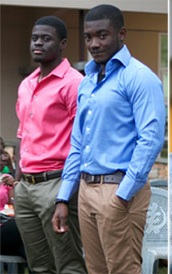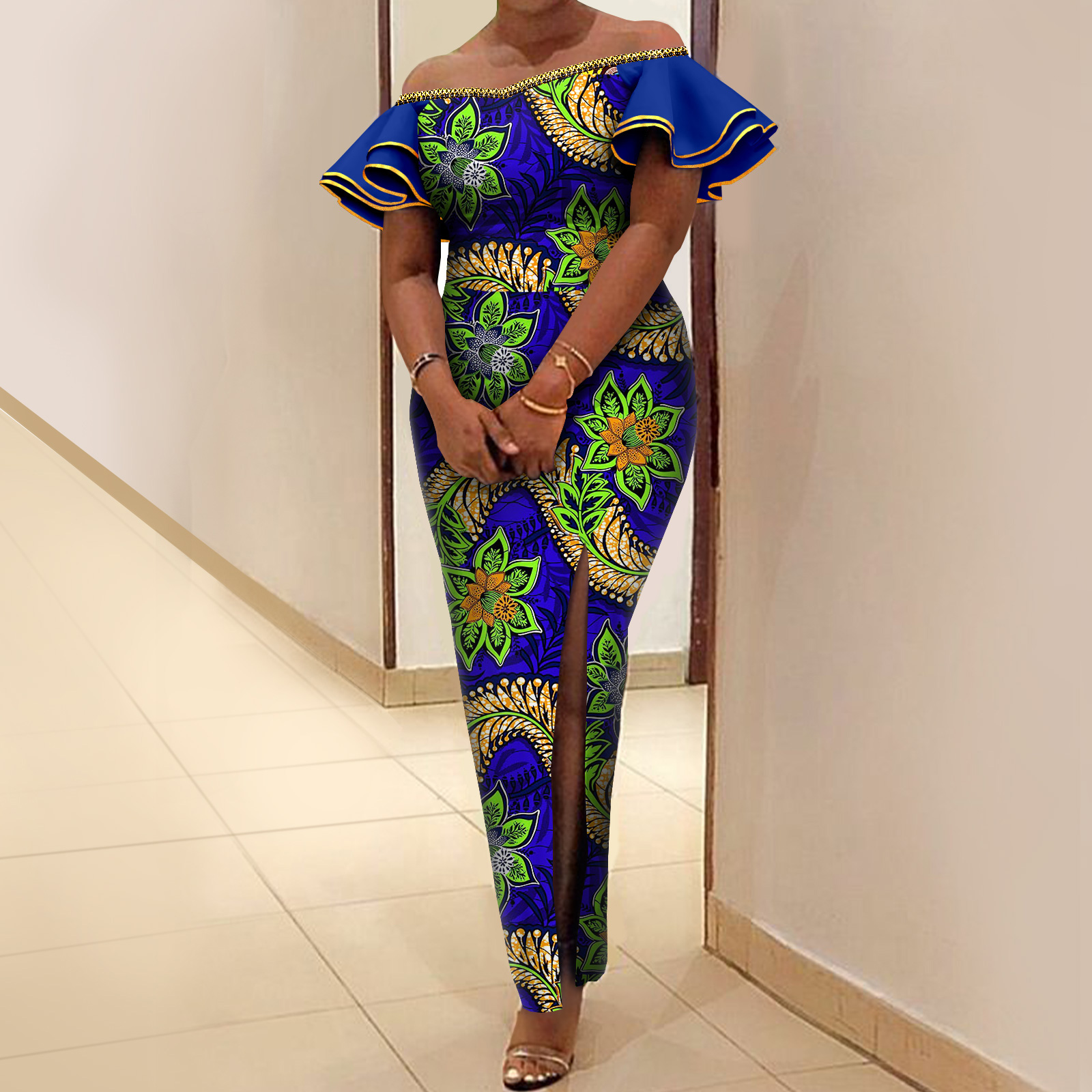Top style tips for Ghana
Traditional values still prevail for many locals in Ghana, and showing excess flesh is not appreciated.
Opt for casual clothing on the whole – leave your designer labels and jewellery at home.
Shorts are acceptable for both men and women, but we suggest that you keep them longer so as not to show your upper thighs.
Wear plenty of sunscreen sunglasses and a sunhat, and remember your insert or mosquito repellant.
There is really no need to pack a bulky jacket or coat, as the climate in Ghana is hot throughout the year. If you choose to bring a jacket, a lightweight option would be most suitable travel pockets.
SHOES TO PACK FOR GHANA
Clothing tips for women
Ghanaian women wear both traditional and Western clothes, and there are no restrictions on what can be worn.
Just make sure your t-shirts or tops are long enough to cover your stomach.
A skirt or loose-fitting trousers are good in the heat and will protect you from the sun.
If you are staying in upscale hotels or resorts, you'll feel much more comfortable if you've packed a smart casual outfit for dinner – try a wrap which can add ‘polish' to anything.
Remember some well-chosen costume jewellery can dress up any outfit too.
Clothing tips for men
If you're looking for versatile and stylish beachwear, try the range of shirts, shorts, polos and swimwear.
How to Dress during the Rainy Season
Lightweight, Quick-Drying Clothing
During the rainy season, opt for lightweight, breathable fabrics like cotton or linen that dry quickly. Consider wearing moisture-wicking clothes that can handle the humidity and occasional rain showers. I personally like to avoid heavy fabrics that can become uncomfortable when wet.
Wear lightweight, water-resistant jackets or raincoats especially during periods when the country experiences a lot of unexpected rains. Pack some breathable, quick-dry shirts or blouses and quick-drying trousers or skirts.
Waterproof shoes or sandals are ideal. Consider shoes with good grip, as the roads and paths can become slippery when wet. Avoid leather shoes that might get damaged by the rain.
If you visit during the rainy season, always remember to carry a compact umbrella and a waterproof bag to protect your belongings from unexpected downpours. Bring an extra pair of shoes when you are packing in case one gets wet.
How to Dress during the Dry Season
The dry season is hot, so choose loose-fitting, light-colored clothing made from breathable fabrics like cotton, linen, and lightweight rayon. These materials will help keep you cool in the heat. Avoid synthetic fabrics that can trap heat and moisture.
Tops & Bottoms
Wear loose-fitting, short-sleeved shirts or blouses or light, long-sleeved shirts for sun protection on days with higher temperatures. When I am going for a casual look, I usually opt for cotton t-shirts. You can also wear lightweight, loose-fitting trousers, long skirts, or knee-length shorts. DressesThis time of the year is also a good time to wear loose, flowing sundresses. But I will mostly wear this during the day as it can get a bit chilly early morning and in the evening around this time of the year.LayeringIn the northern regions during the harmattan, temperatures can drop significantly in the evenings and early mornings. Bring a light sweater or jacket for layering, especially if you're visiting in December or January.Footwear Comfortable breathable walking shoes or sandals are a must. If you plan to hike or explore rugged areas, opt for sturdy shoes with good ankle support. Avoid high heels, especially on unpaved roads. I personally prefer to wear high heels when I know I am mostly going to be indoors as most streets in Ghana have no pavements for pedestrians which can make it difficult to walk outside in high heels.
Accessories.
sun can be intense during the dry season and sometimes during the middle of the year, so wear a wide-brimmed hat, sunglasses, and sunscreen. On such days, you can also wear long-sleeved shirts and pants that can also protect your skin from sunburn
6. Religious Sites (National Mosque, churches)
Conservative, modest clothingConservative styles are especially valued in formal settings, traditional ceremonies, and religious gatherings. Here’s what this can look like:
Kaba and Slit: A traditional outfit for women, usually worn with a wrap skirt (slit) and a fitted blouse (kaba). It’s conservative, covering the arms and often extending to the ankles, and is commonly worn at church, weddings, and traditional events.
Smocks and Batakari: For men, smocks are a conservative choice in northern Ghana, often worn for traditional and religious events. These cover most of the body and reflect cultural pride and respect for heritage.
Long, Flowing Dresses and Skirts: These are preferred by many women for modesty. They can be styled with African print fabrics and are often worn to workplaces and social gatherings.
Modern Clothing
Modern styles in Ghana, especially in urban areas, reflect global fashion trends, though many still incorporate elements of traditional Ghanaian attire:
African Print Dresses and Suits: These combine traditional fabrics with contemporary cuts, like pencil skirts, fitted blazers, and tailored suits, making them popular for both casual and formal settings.
Western-Influenced Attire: Western clothes like jeans, T-shirts, and formal business suits are common in cities, especially among the younger generation. These are more casual but are worn in a way that’s culturally appropriate and respectful.
Blended Attire: Mixing traditional fabrics like kente or wax prints with Western styles is popular for creating a look that’s both modern and uniquely Ghanaian. For example, pairing a tailored blazer made from kente with dress pants is a chic, urban look.
Women: long skirts or trousers, covered shoulders
Men: long trousers, collared shirts
Remove shoes when entering mosques
7. Traditional Villages and Rural Areas
Modest, respectful clothing
1. For Women
Kaba and Slit: This is a traditional outfit consisting of a fitted top (kaba) and a long skirt (slit), usually made from colorful Ghanaian fabrics like kente or wax prints.
Wrap Dresses: Dresses or skirts that are knee-length or longer, typically with sleeves or covered shoulders, are considered modest and are common for both casual and formal wear.
Head Wraps (Duku): Wearing a head wrap with traditional attire is common and adds a touch of elegance, especially during ceremonies and religious gatherings.
2. For Men
Kaftans or Traditional Tunics: Long tunics, often paired with matching trousers, are traditional and provide a comfortable, respectful look.
Kente Cloth: Men may also wear kente or other traditional cloths wrapped over one shoulder, especially during formal events or traditional ceremonies.
3. General Tips
Avoid Excessive Skin Exposure: For women, avoiding low-cut tops or mini-skirts and opting for mid-length or longer outfits is ideal.
Natural Colors and Patterns: African prints with intricate patterns and bold colors are widely respected. Ghanaian culture appreciates tasteful, vibrant designs that reflect heritage.
These choices ensure respect for Ghanaian traditions while embracing the beauty and vibrancy of the culture. Modest, respectful clothing in Ghana typically aligns with cultural values of decency and practicality, especially in formal or traditional settings. Here are some key elements:
Consider the Occasion: For religious events or traditional gatherings, more conservative dress is expected, while social gatherings may allow for slightly more flexibility.
Avoid overly revealing or flashy attire
Comfortable, sturdy shoes for uneven terrain
8. Upscale Restaurants or Events
Smart-casual to semi-formal attire
Collared shirts and trousers for men
Dresses or smart separates for women
Upscale restaurants in Ghana often have a dress code leaning toward smart or elegant attire, reflecting a sophisticated yet comfortable vibe. Here’s how to dress for these settings:
1. For Women
Dresses: A cocktail dress or a stylish midi dress in lightweight fabrics works well. Avoid overly revealing styles and opt for classic cuts that complement the elegant ambiance.
Blouses and Skirts/Pants: A chic blouse paired with a fitted skirt or tailored trousers also works. Pairing African prints with solid colors is popular and stylish.
Accessories: Simple, tasteful jewelry and a clutch or small handbag complete the look. A shawl or light wrap can be helpful in air-conditioned spaces.
2. For Men. 
Collared Shirts: A well-fitted button-down shirt (long or short-sleeved) is a versatile choice. Pairing it with dress trousers or dark jeans gives a polished look.
Blazers or Jackets: Adding a blazer or a lightweight jacket can elevate the outfit, though it’s optional depending on the weather.
Footwear: Loafers, brogues, or other formal shoes suit upscale settings and provide a classy finish.
3. General Tips
Smart Casual with a Touch of African Print: Ghanaian fashion often incorporates traditional African prints, even in upscale settings. A subtle touch, like a print accessory or a fusion outfit, adds elegance and celebrates local style.
Comfortable, Breathable Fabrics: Given Ghana’s warm climate, choose fabrics like cotton or linen to stay cool and comfortable.
Minimal Yet Stylish Accessories: Upscale dining tends to favor subtle elegance over flashiness, so keep accessories tasteful.
This combination of style and cultural consideration ensures you’re dressed appropriately for a refined dining experience in Ghana.
While the dress code is not overly strict, showing too much skin can be frowned upon, especially in religious or traditional areas. Avoid extremely short shorts, mini skirts, or revealing tops.
1. If you plan to visit churches, mosques, or other religious sites, dress modestly, covering your shoulders, knees, and, for women, your hair if required. A scarf or shawl can be useful for this purpose.
2.Ghana is known for its beautiful textiles, including kente cloth, batik, and tie-dye. Purchasing clothing made from these fabrics not only supports local artisans but also allows you to immerse yourself in the culture. Tailors and seamstresses in Ghana can create custom outfits if you wish to have something unique
3. Avoid anything too flashy or attention-grabbing like expensive jewelry.
4.Prioritize comfort over style, especially when exploring cities or natural areas.
5.Always bring a hat, sunglasses, and high-SPF sunscreen as you will need it for protection against the sun
6.Ghanaian weather can be unpredictable, especially during the rainy season. Dressing in layers and carrying versatile items, like a shawl or light jacket, allows you to adapt to changing conditions
7.Consider buying some local clothing items for a more authentic experience and to support the local economy.
8.In rural or forested areas, long sleeves and trousers can help protect against insect bites especially at night.










